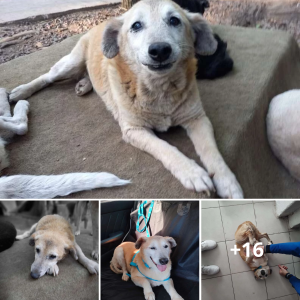Fangtooth fish are part of family Anoplogastridae and mainly thrive in depths between 1,640 and 6,562 feet in temperate and tropical waters. Their genus scientific name, Anoplogaster, is derived from the Greek words meaning unarmed (anoplo) and stomach (gaster). Ironically, fangtooth fish don’t appear unarmed at all due to their disproportionately large jaws and sharp teeth.
:max_bytes(150000):strip_icc():format(webp)/fangtooth3-876c95ffaa2d4981b6d6d422781f412c.jpg)
Fast Facts
- Scientific Name: Anoplogaster cornuta, Anoplogaster brachycera
- Common Names: Common fangtooth, ogrefish, shorthorn fangtooth
- Order: Beryciformes
- Basic Animal Group: Fish
- Distinguishing Characteristics: Lower jaw that extends outwards with long sharp teeth
- Size: Up to 3 inches (Anoplogaster brachycera) and up to 6-7 inches (Anoplogaster cornuta)
- Weight: Unknown
- Life Span: Unknown
- Diet: Small fish, squid, crustaceans
- Habitat: In temperate/tropical waters in the Pacific, Atlantic, and Indian oceans, and off the coast of Australia and the British Isles
- Population: Not documented
- Conservation Status: Least Concern

Description
The fangtooth is a small fish with a laterally compressed body. Despite their small size, fangtooths have large heads and disproportionately long sharp teeth. Two sockets have developed on the sides of their brains to make room for the teeth when their jaws close. Large teeth enable the fangtooth to kill fish much larger than itself.
:max_bytes(150000):strip_icc():format(webp)/fangtooth2-7275a9f6e49d42dca69147f670f982e3.jpg)
Common fangtooth, Anoplogaster cornuta, on ice.
Fangtooth fish colors range from black to dark brown as adults and are light gray when young. Their bodies are covered with prickly scales and spines. They can be found at depths anywhere from 6 feet to 15,000 feet but are most commonly found between 1,640 and 6,562 feet. When fangtooth are young, they tend to live in shallower depths.
Habitat and Distribution
The common fangtooth is found around the world in temperate marine waters. This includes the Atlantic, Pacific, and Indian oceans, appearing off the waters of Australia and from the central to Southern British Isles. The shorthorn fangtooth lives in tropical waters from the western Pacific and the Gulf of Mexico to the western Atlantic.

Diet and Behavior
The fangtooth is a carnivorous and highly mobile fish, feeding on small fish, shrimp, and squid. When they are young, they filter zooplankton from the water and migrate closer to the surface at night to feed on crustaceans. Adults either hunt alone or in schools. Unlike other predators that ambush their prey, fangtooth fish actively seek out food.
:max_bytes(150000):strip_icc():format(webp)/fangtooth_fish-580a1a423df78c2c73300b0f.jpg)
Fangtooth Fish (Anoplogaster cornuta) close-up of head showing teeth, from the Mid-Atlantic Ridge.
Their large heads allow them to swallow most prey whole, eating fish one-third their size. When fangtooths’ mouths are full, they can not pump water over their gills as efficiently. Thus, they produce large gaps between their gills and use their pectoral fins to fan water over their gills from behind. To find prey, fangtooths have lateral lines along each side of their bodies, which are important for detecting changes in temperature and movements of potential prey. They also rely on contact chemoreception, where they find prey by bumping into them.

Reproduction and Offspring
Not much is known about fangtooth fish reproduction, but they generally reach reproductive maturity at 5 inches for the common fangtooth. From June to August, males will latch on to females with their jaws and fertilize the eggs the females release into the ocean. Fangtooth fish do not guard their eggs, so these young are on their own. As they grow, they descend to deeper depths. As larvae, they appear close to the surface and by the time they are adults, they may be swimming at depths of up to 15,000 feet. Overlapping of depth and habitats occurs across stages of maturity.

Fangtooth (Anoplogaster cornuta), illustrated view of a deep sea fish with a small body and disproportionately large head, and large teeth. Dorling Kindersley/Getty Images
There are two known species: Anoplogaster cornuta (the common fangtooth) and Anoplogaster brachycera (shorthorn fangtooth). Shorthorn fangtooth fish are even smaller than common fangtooth fish, reaching sizes of just short of 3 inches. They are most commonly found at depths between 1,640 and 6,500 feet.
Conservation Status
The common fangtooth is designated as least concern according to the International Union for Conservation of Nature (IUCN) red list, while the shorthorn fangtooth has not been assessed by the IUCN. Due to their appearance, they do not have any commercial value.





